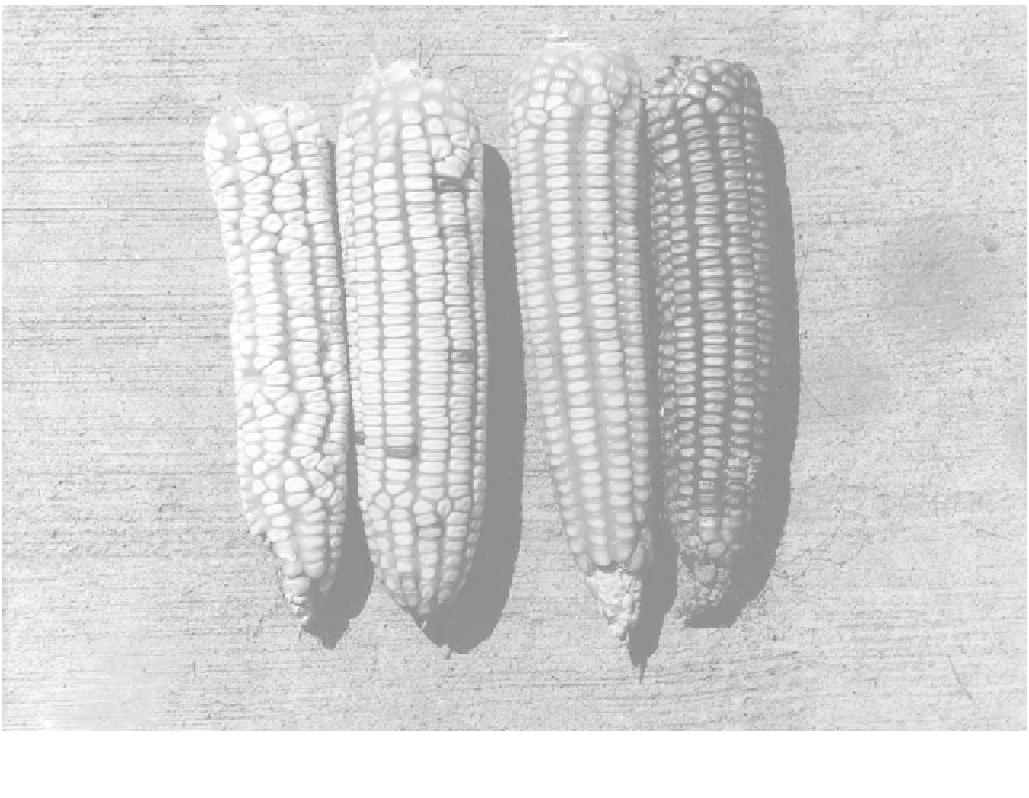Agriculture Reference
In-Depth Information
FIGURE 14.5
Four mass-selected, local landraces of corn from the lowlands of Tabasco, Mexico.
Each landrace has a different
name, planting time, and preferred location.
The pure line selection process can be modified in a
variety of ways. One is to transfer genes between existing
pure lines through artificial cross-pollination in an effort
to produce a new line with a new combination of charac-
teristics. Sometimes this is accomplished by repeatedly
backcrossing the progeny of an artificial cross with a
parent having a specific desired characteristic.
Hybridization
The primary method of directed selection today in many
important crop plants — especially corn — is the produc-
tion of hybrid varieties. A hybrid is a cross between two
very different parents, each from a different pure-breeding
line. The process of creating a hybrid variety involves two
basic steps.
First, the two distinct pure-breeding lines are pro-
duced. (Pure-breeding means that the genomes are largely
homozygous at most gene loci.) In cross-pollinated plants
(and self-pollinated plants that cross-pollinate frequently),
this step involves artificial inbreeding, which is accom-
plished in a variety of ways.
Second, the two pure-breeding lines are crossed to
produce the hybrid seed that is planted by farmers for
production of the crop. Neither self-pollination nor cross-
pollination between plants of the same line can occur in
this step, necessitating the use of certain techniques. One
technique, used in corn, is to plant the pollen-donor paren-
tal line and the seed-producing parental line in alternating
rows or strips and to detassel the seed-producing plants
before the tassels produce pollen (the tassels contain only
Production of Synthetic Varieties
In cross-pollinated plants, an analog to a self-pollinated
pure line, called a
synthetic variety
or synthetic cultivar,
can be created through a variety of techniques. The under-
lying principle is to limit the parental genotypes to a few
that are known to have superior characteristics and to cross
well. In alfalfa, for example, this can be done by planting
seed from only a few specific sources (such as two or three
clonal lines) in an isolated field and allowing natural cross-
ing to occur. Seed produced from this field is then distrib-
uted as a synthetic variety. Synthetic varieties have greater
genetic variability than self-pollinated pure line varieties,
but far less variability than mass-selected, open-pollinated
varieties.

Search WWH ::

Custom Search